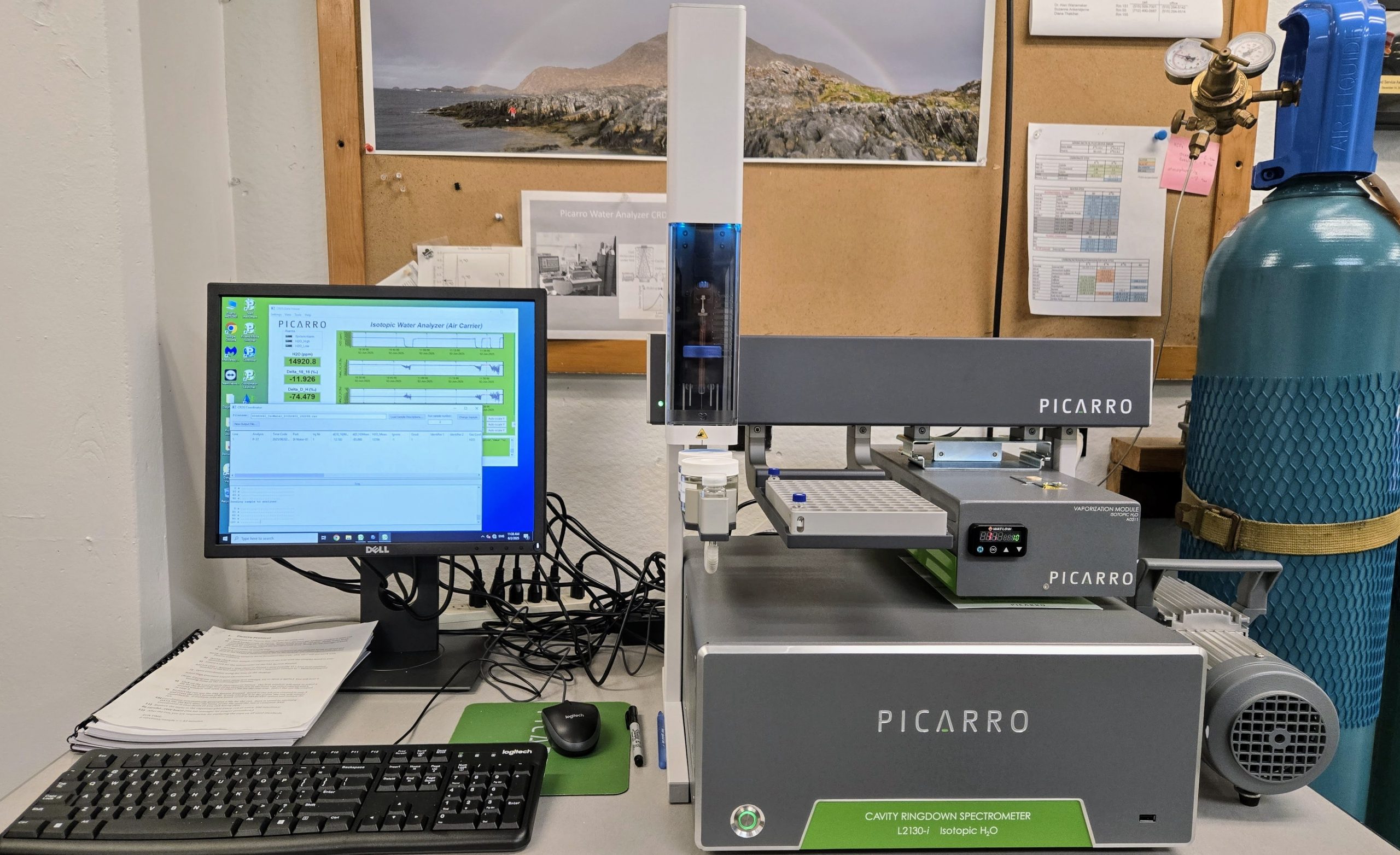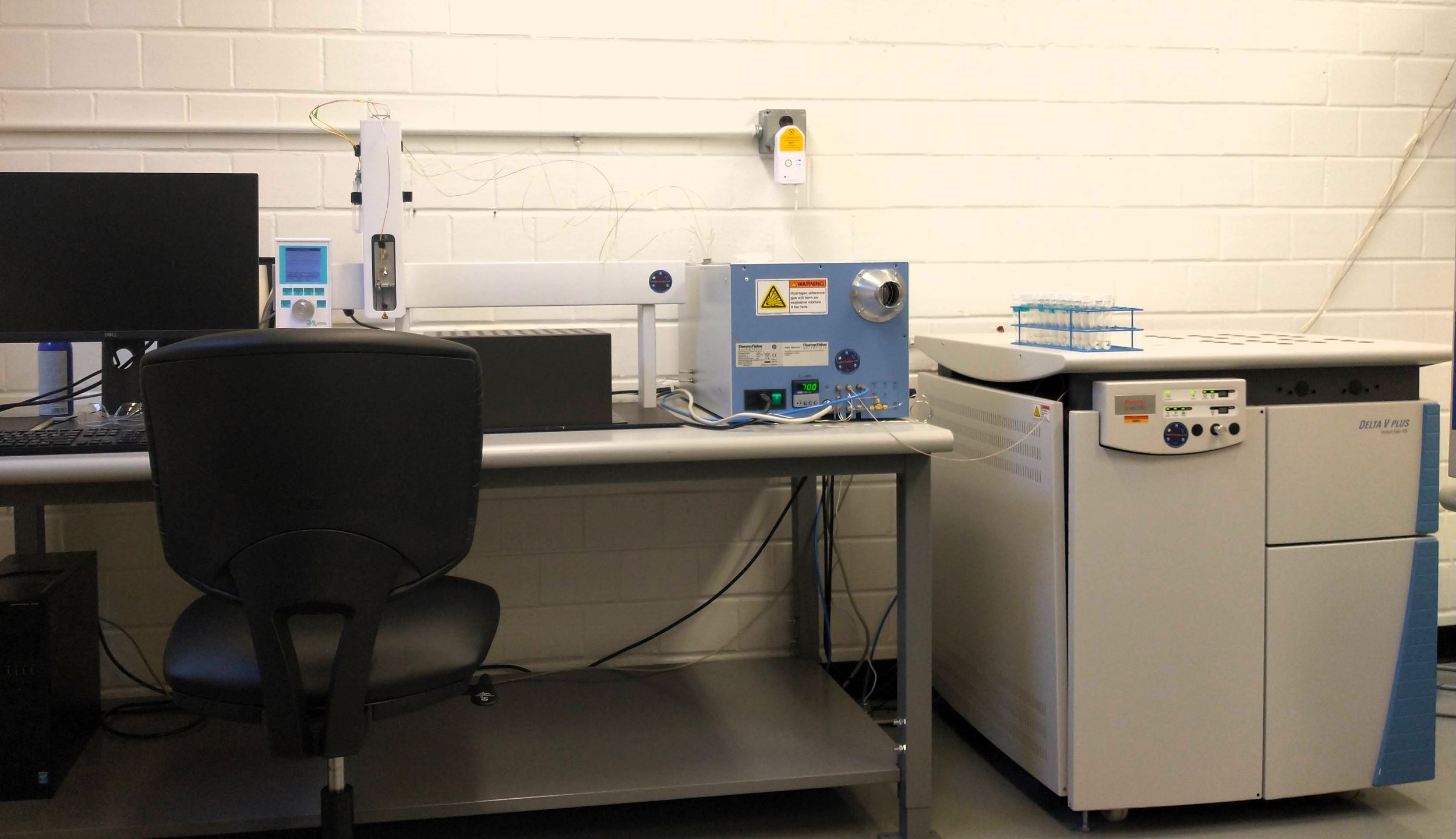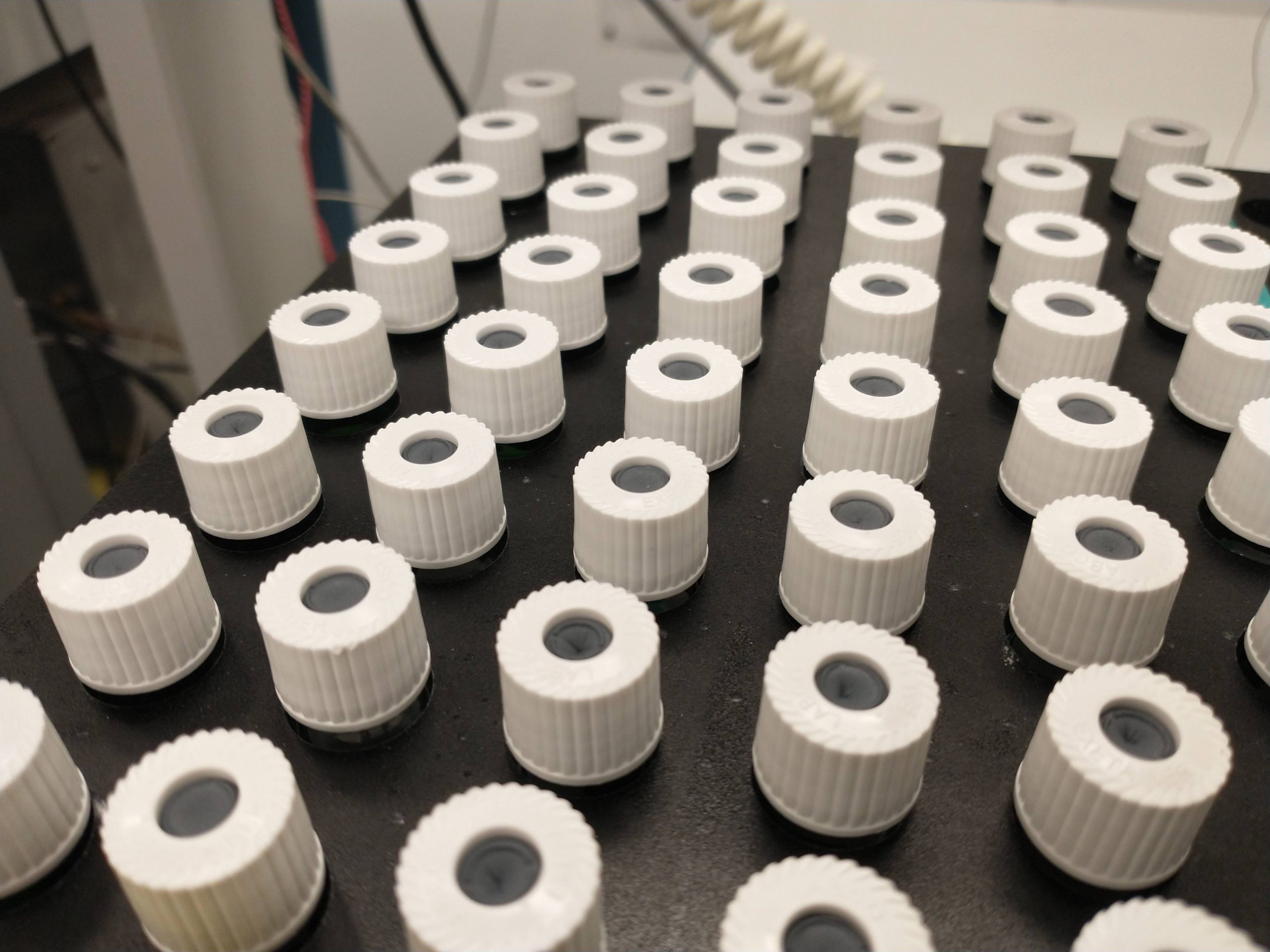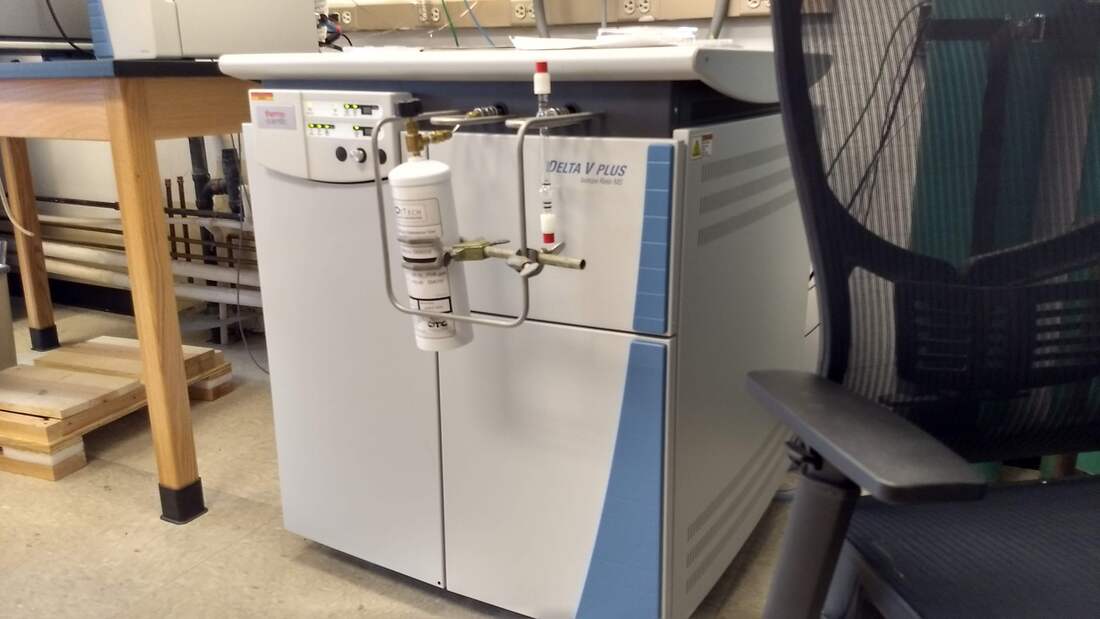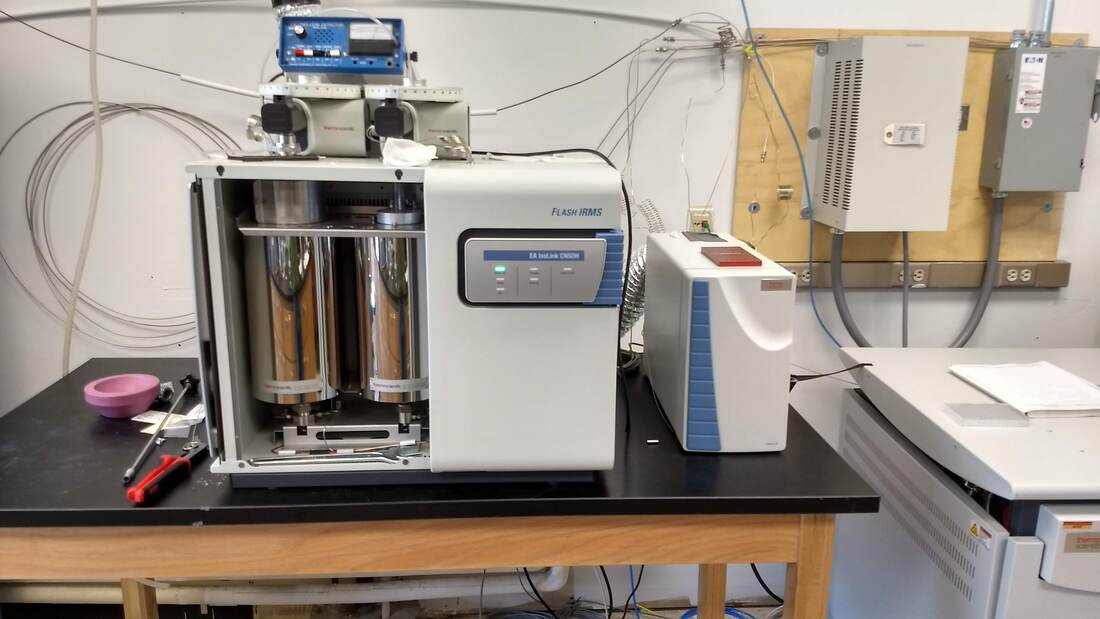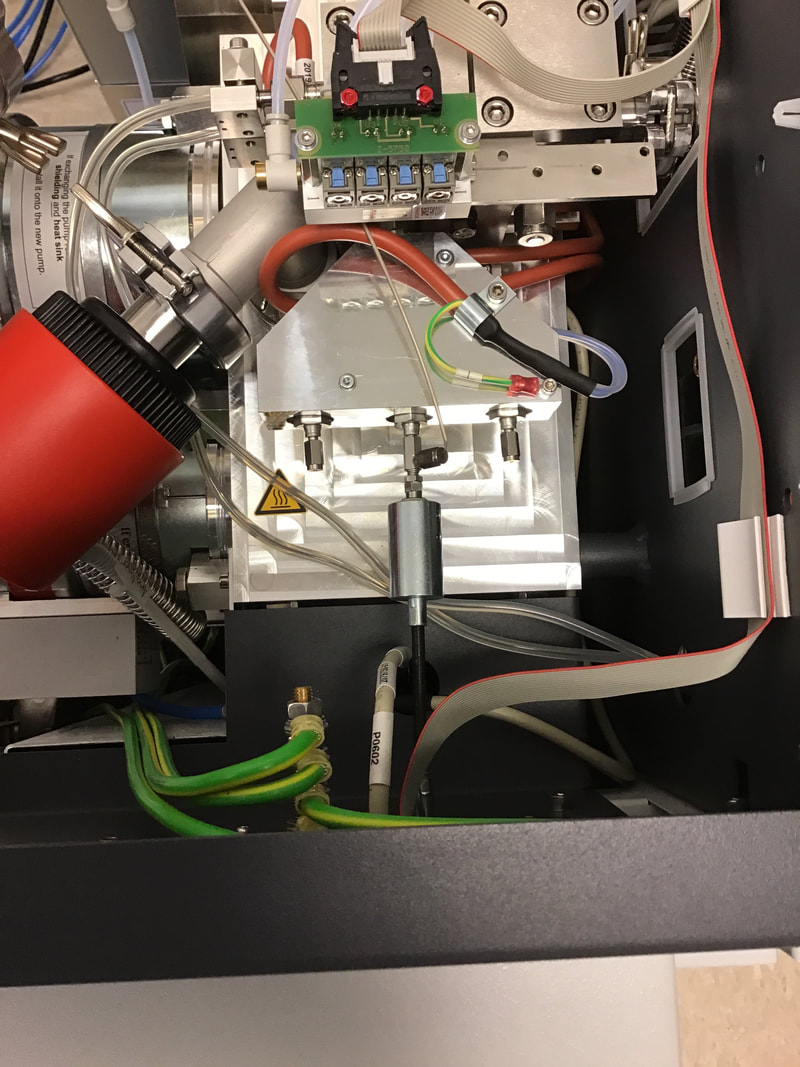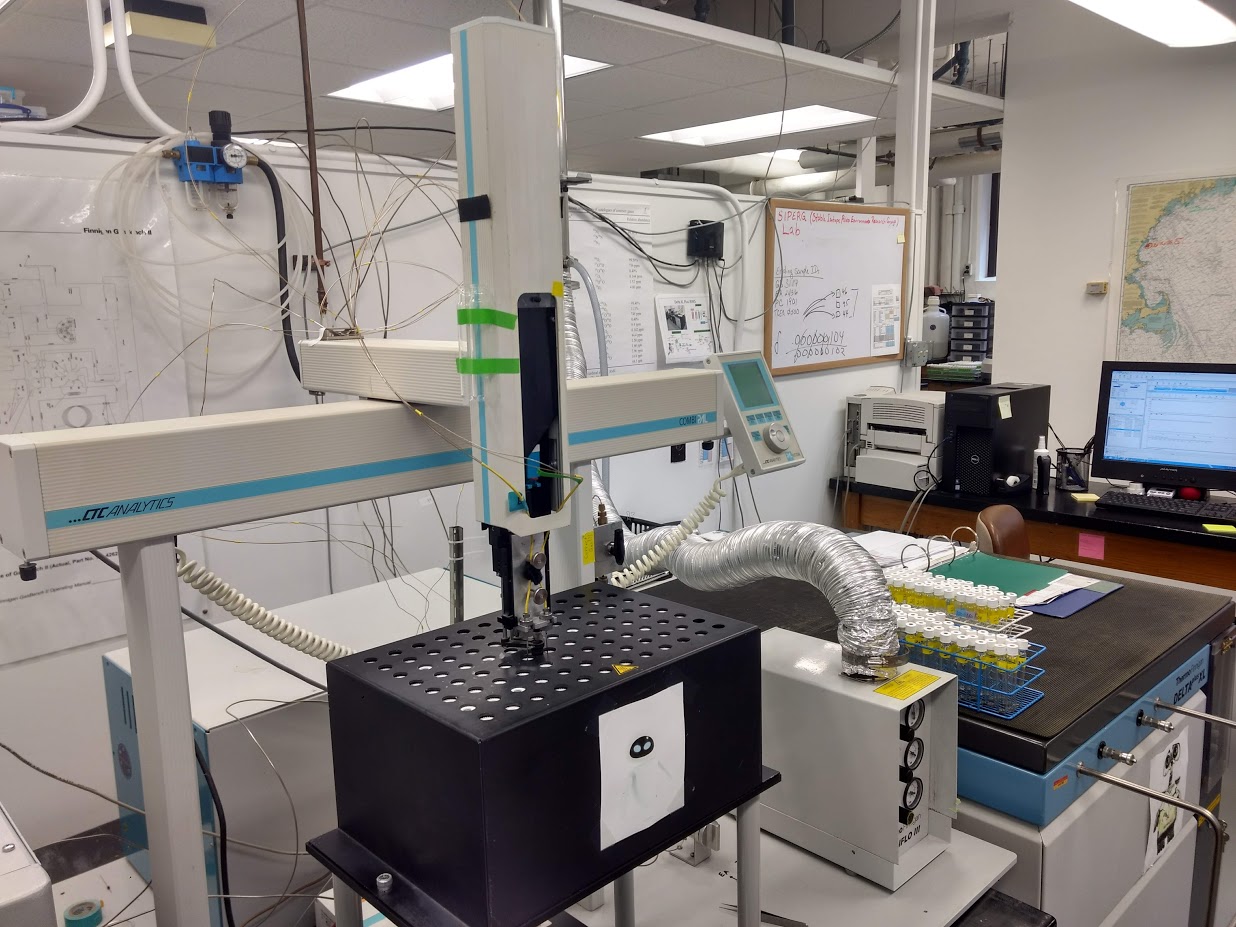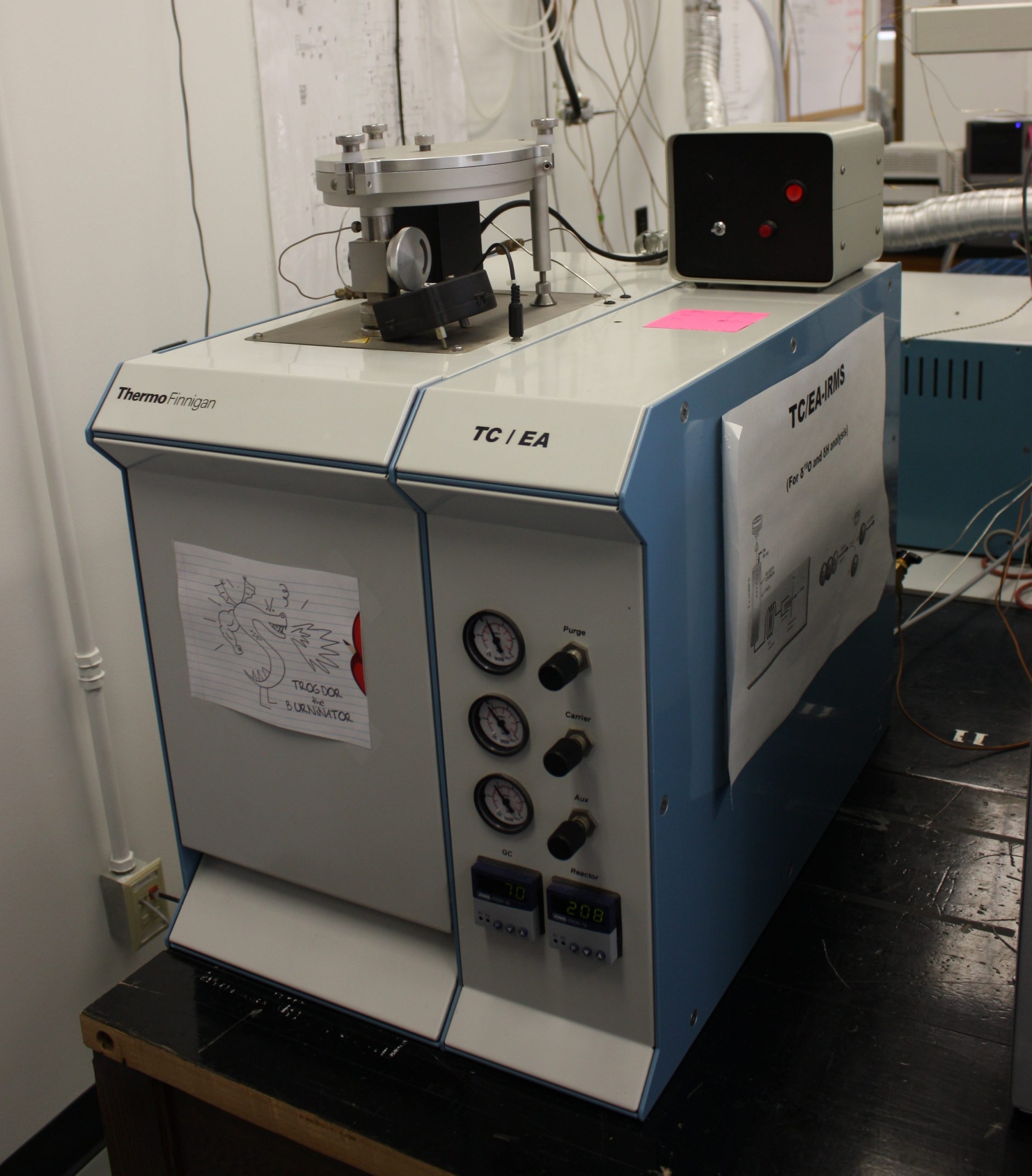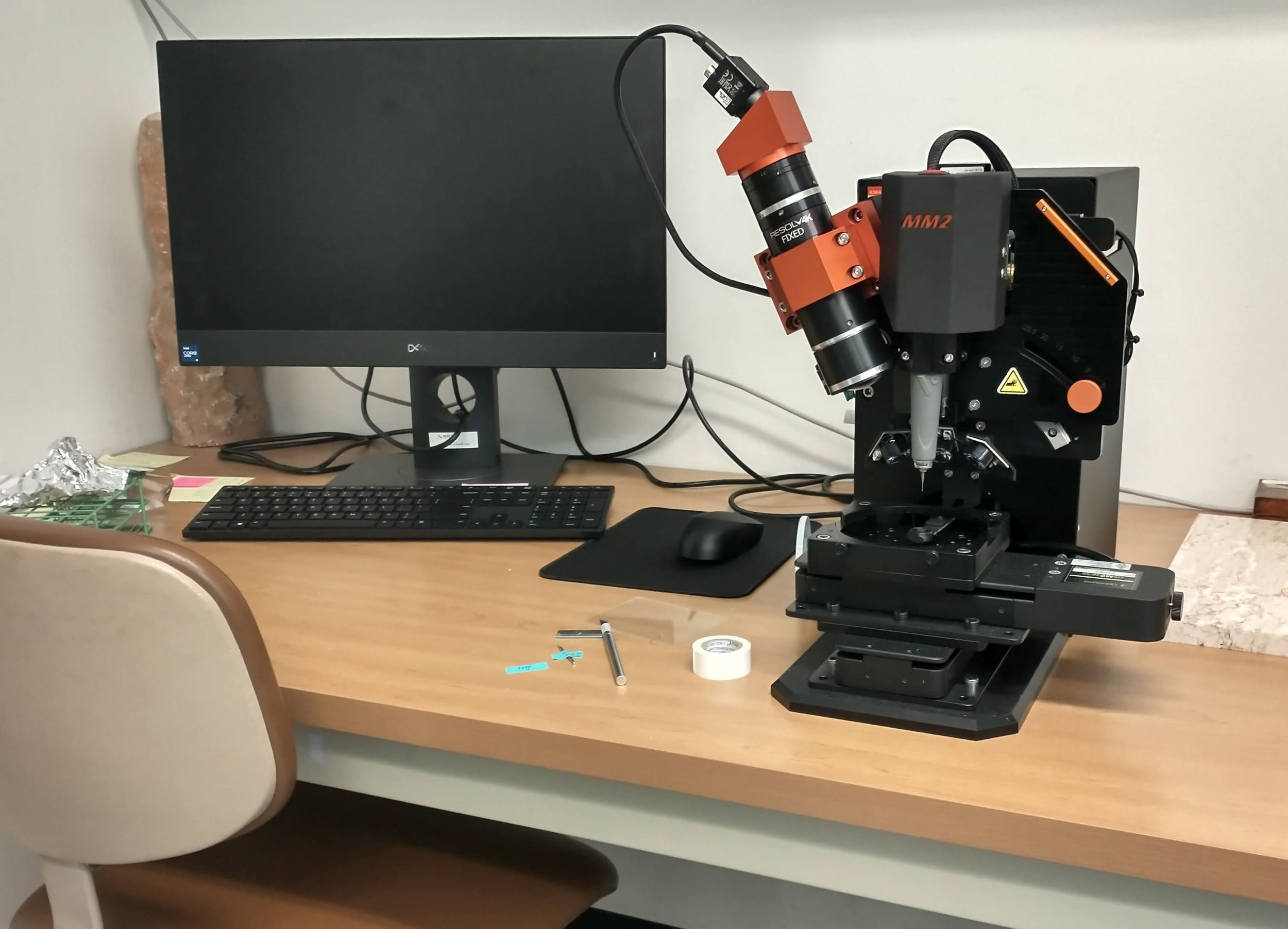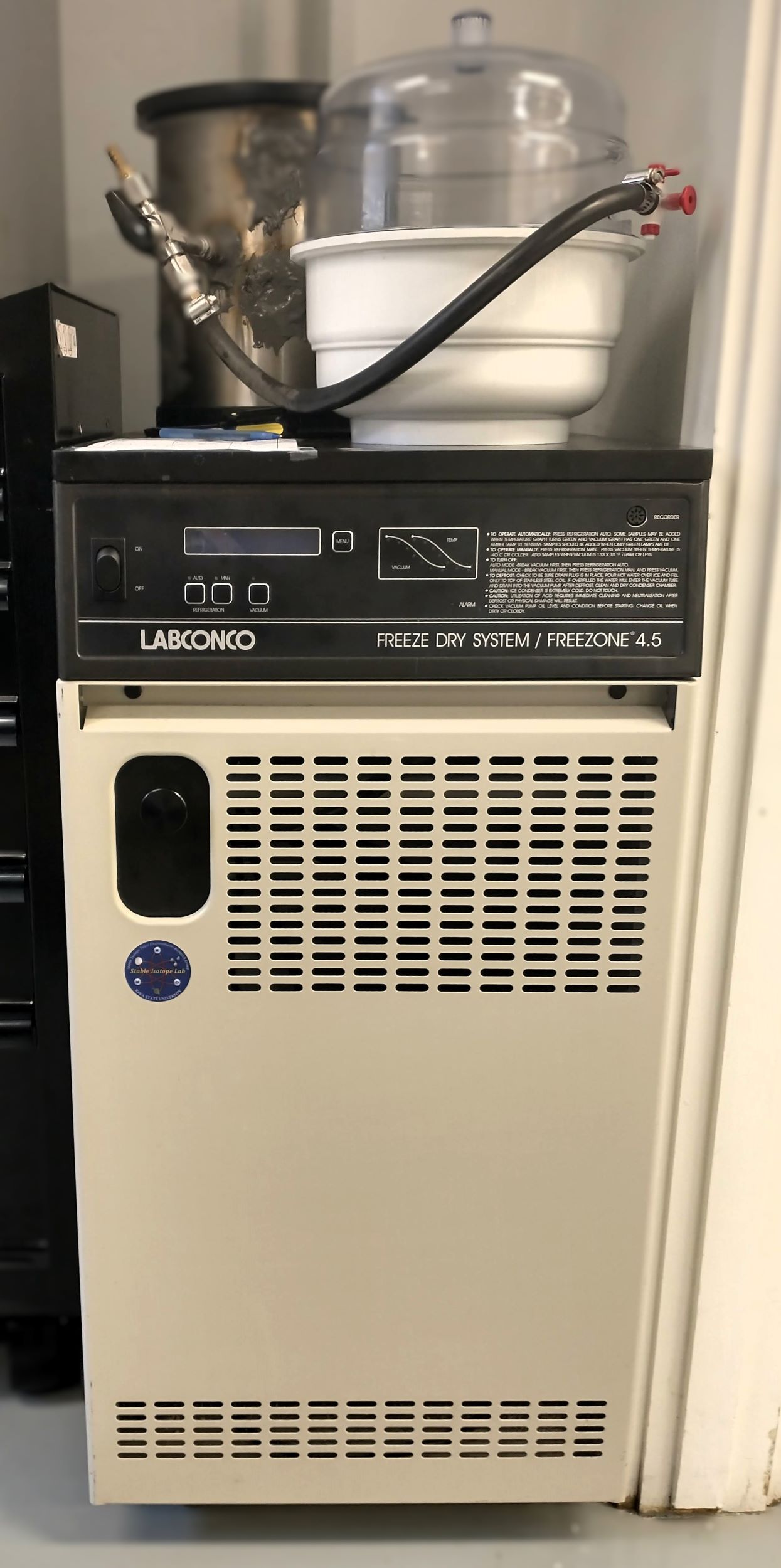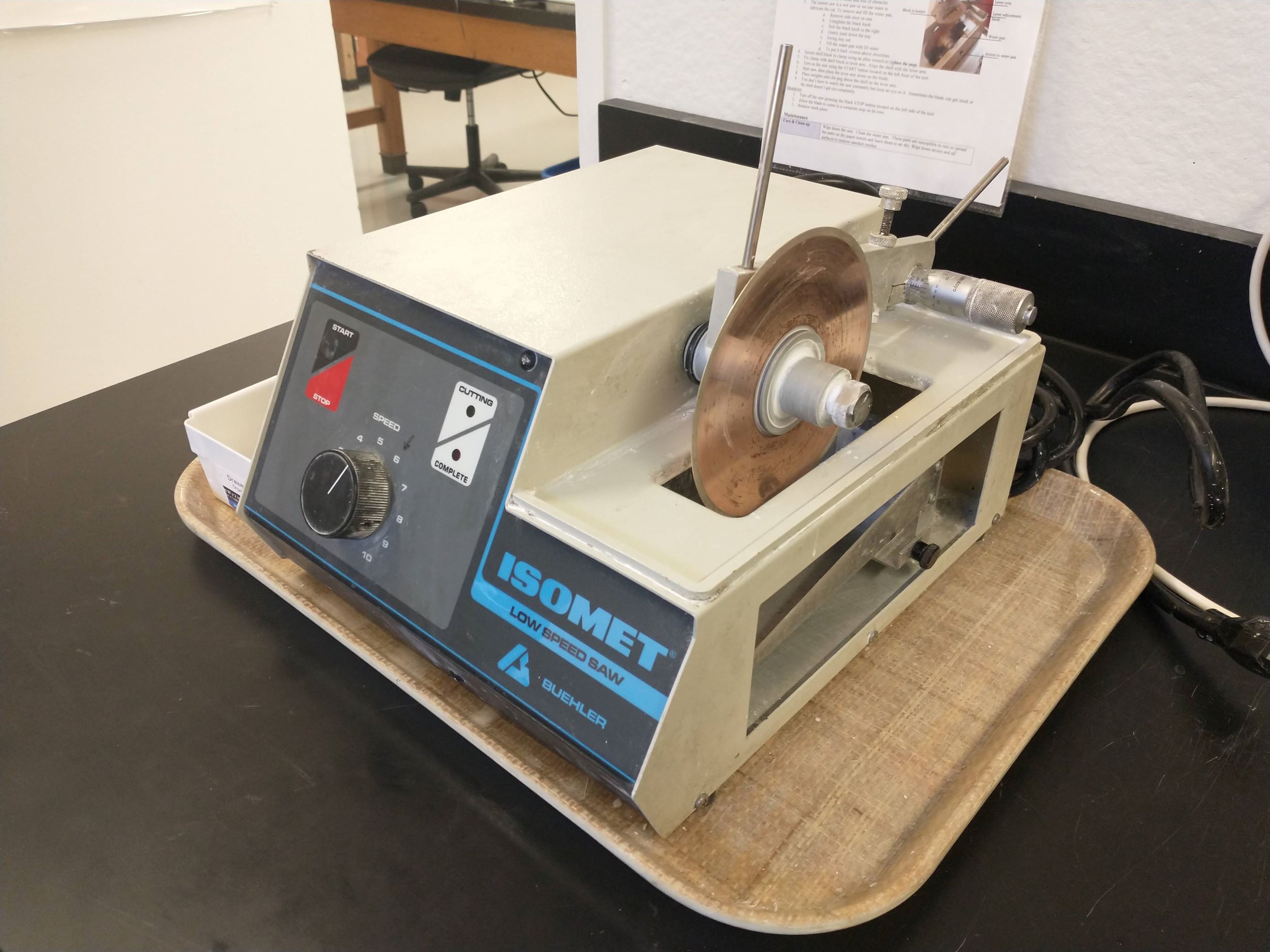The Stable Isotope Lab provides the following analyses:
- δ13C and δ18O of carbonate
- δ13C and δ15N in solid samples, such as soils, plant materials, and dried extracts (combustion)
- δ34S in solid samples
- δ13C and δ15N and δ34S in solid samples
- δ2H and δ18O in solid organic samples (pyrolysis)
- δ2H and δ18O in natural abundance, clean water
- δ13C of dissolved inorganic carbon in water
- δ13C and δ15N and atom% of 13C and 15N of enriched solid samples
The lab’s instrumentation consists of 4 analytical systems and various tools to prepare samples for isotope analysis. There are 3 continuous flow mass spectrometers coupled with several sample introduction systems and a Picarro L2130-i Isotopic Liquid Water Analyzer with an autosampler for rapid measurements of deuterium and oxygen.


